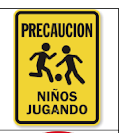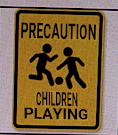Contents
Content Type: 1
Title: COERLL Launches OER Guide for Language Teachers
Body:
From http://blog.coerll.utexas.edu/oe-week-2019/
Our sister LRC the Center for Open Educational Resources and Language Learning has launched a series of modules on topics related to creating and using open educational resources and practices. Access the series, Introduction to OER for Language Teachers, at https://utexas.instructure.com/courses/1097558
Source: COERLL
Inputdate: 2019-03-15 11:16:07
Lastmodifieddate: 2019-03-18 04:42:43
Expdate:
Publishdate: 2019-03-18 02:15:01
Displaydate: 2019-03-18 00:00:00
Active: 1
Emailed: 1
Isarchived: 0
Content Type: 1
Title: Crosstalk Example Videos Highlight Drawing to Communicate Meaning
Body:
From http://blog.teachersdiscovery.com
Teacher's Discovery is featuring a series of blog posts by language teachers. In one of them, Caroline Hyslop "crosstalk," in which two people speak two different languages to each other, a form of language exchange. Read her post introducing the technique here: http://blog.teachersdiscovery.com/spanish/what-crosstalk-is-and-why-it-can-help-you-become-a-better-teacher/
In a second, more recent post, Hyslop provides pointers on communicating meaning to your listener when speaking a language that is new to him/her. She focuses especially on drawing to convey meaning and includes a few videos by other teachers, including Pablo Roman speaking Spanish and Alice Ayel speaking French, that demonstrate how to tell a story and illustrate it at the same time with simple line drawings. These videos and tips can be helpful for any teacher seeking to be more comprehensible to learners, or to people doing any sort of language exchange. Read the second blog post at http://blog.teachersdiscovery.com/spanish/how-to-start-doing-crosstalk-and-not-die-trying/
Source: Teacher's Discovery
Inputdate: 2019-03-15 11:16:53
Lastmodifieddate: 2019-03-18 04:42:43
Expdate:
Publishdate: 2019-03-18 02:15:01
Displaydate: 2019-03-18 00:00:00
Active: 1
Emailed: 1
Isarchived: 0
Content Type: 1
Title: Retrieval Practice
Body:
From https://www.middleweb.com
Marilee Sprenger writes, "Memory research leads us to a very important insight: not only do we have to help students store information, they also need to be able to retrieve it. And retrieval is no simple matter.
"For instance, rereading is a very ineffective way to study material. In fact, research suggests that rereading leads to a false sense of confidence. Students believe that because they recognize information that has been taught to them, they know it. They very often don’t.
"How can we help students know they know? Rehearsal and retrieval strategies. To put it simply, rehearsal helps get information in and retrieval helps get it out."
Read the full article for lots of ideas for retrieval practice: https://www.middleweb.com/39762/getting-test-ready-try-some-retrieval-practice/
Source: MiddleWeb
Inputdate: 2019-03-15 11:17:35
Lastmodifieddate: 2019-03-18 04:42:43
Expdate:
Publishdate: 2019-03-18 02:15:01
Displaydate: 2019-03-18 00:00:00
Active: 1
Emailed: 1
Isarchived: 0
Content Type: 1
Title: Teaching Strategy: Write and Discuss
Body:
From https://comprehensibleclassroom.com
Martina Bex shares one of her standard teaching techniques: Write and Discuss. Students are first exposed to shared information, such as a story and then they discuss what they just learned about while the teacher takes notes.
See this technique in action with young children in a video, and read a description of this activity used with two adults in this post: https://comprehensibleclassroom.com/2019/02/25/write-and-discuss-language-classes/
Source: The Comprehensible Classroom
Inputdate: 2019-03-15 11:18:26
Lastmodifieddate: 2019-03-18 04:42:43
Expdate:
Publishdate: 2019-03-18 02:15:01
Displaydate: 2019-03-18 00:00:00
Active: 1
Emailed: 1
Isarchived: 0
Content Type: 1
Title: Simplify Your Classroom Management Vocabulary to Stay in the Target Language
Body:
From https://elmundodepepita.blogspot.com
Julie, the writer of the Mundo de Pepita blog, writes, "When redirecting students, we teachers often have a tendency to be a bit verbose, going into a long explanation of what needs to happen instead of boiling down the redirect to its most concrete components-which also makes it more comprehensible more often than not. Think about all the routines and expectations you have in class, and how, regardless of how angelic your students are, often you have to redirect behaviors...now think of the actual language you use. Is it a simple command (raise your hand, sit appropriately, don't touch, etc.) or is it populated with incomprehensible language that is also unnecessary to get the point across and have the desired behavior come about? These concise, concrete redirects may take a little to get used to, and may feel a little curt at first (but it's all in the tone!!), but they will pay off down the road as you are able to stay more in the target language which provides more input for students-and did you ever notice that most classroom management vocabulary, especially when boiled down, contains high frequency words?!"
Read the full blog post at https://elmundodepepita.blogspot.com/2019/02/simplify-your-classroom-management.html
Source: Mundo de Pepita
Inputdate: 2019-03-15 11:19:18
Lastmodifieddate: 2019-03-18 04:42:43
Expdate:
Publishdate: 2019-03-18 02:15:01
Displaydate: 2019-03-18 00:00:00
Active: 1
Emailed: 1
Isarchived: 0
Content Type: 1
Title: Let’s Get Creepy! Using a Modified Movietalk to Set the Tone for a Reader
Body:
From https://fluencymatters.com/lets-get-creepy-by-donna-tatum-johns/
Getting students motivated to read might not always be an easy task. In this article, Donna Tatum-Johns talks about her French class and her experience using comprehensible input to help her students read more in the target language. However, she used special techniques and materials to get her students more motivated and engaged in the classroom. The book she used had a creepy storyline and reflected the French culture. She also took advantage of her students’ love for horror movies.
To read more about how she did it, visit https://fluencymatters.com/lets-get-creepy-by-donna-tatum-johns/
Source: Fluency Matters
Inputdate: 2019-03-15 11:20:17
Lastmodifieddate: 2019-03-18 04:42:43
Expdate:
Publishdate: 2019-03-18 02:15:01
Displaydate: 2019-03-18 00:00:00
Active: 1
Emailed: 1
Isarchived: 0
Content Type: 1
Title: Seven Outside the Box Ways to Use Bingo in the World Language Class
Body:
Bingo is one of the games that can be used in the language classroom in order to get students listen to the target language. Bingo games can be used not only for novice learners, but also for other proficiency levels. Bingo can be used for reinforcing vocabulary, grammar, or even cultural elements. In this article read about ideas to use bingo for different purposes such as: a pre-reading activity, thinking about past events, thinking about different scenarios, geography, finding about future plans, and teaching about culture. These are great ideas that can be practiced in any language class.
To read how these activities can be done, visit http://teachinginthetargetlanguage.com/7-outside-the-box-ways-to-use-bingo-in-the-world-language-class/
Source: Teaching in the Target Language
Inputdate: 2019-03-15 11:20:53
Lastmodifieddate: 2019-03-18 04:42:43
Expdate:
Publishdate: 2019-03-18 02:15:01
Displaydate: 2019-03-18 00:00:00
Active: 1
Emailed: 1
Isarchived: 0
Content Type: 1
Title: Podcast: What This Writing Expert Learned That Will Make you a Better Teacher
Body:
From https://www.coolcatteacher.com
In this episode of Cool Cat Teacher podcast series, listen to Vicki Davis talk to Angela Stockman about why learners don’t like to revise their writing and how to deal with this problem. Angela Stockman talks about outlining the writing without words at first. This teacher helps learners structure their thoughts and eventually put them on paper. She also puts emphasis on the fact that it could be too late to revise the writing when it is completely done.
To listen to the podcast, visit https://www.coolcatteacher.com/what-this-writing-expert-learned-that-will-make-you-a-better-teacher/
Source: Cool Cat Teacher
Inputdate: 2019-03-15 11:21:31
Lastmodifieddate: 2019-03-18 04:42:43
Expdate:
Publishdate: 2019-03-18 02:15:01
Displaydate: 2019-03-18 00:00:00
Active: 1
Emailed: 1
Isarchived: 0
Content Type: 1
Title: Podcast: Target Language Comprehensibility
Body:
From http://inspiredproficiency.libsyn.com
In this new episode of the podcast series Inspired Proficiency, listen to Ashley, the host, talk to Rebecca Blouwolff, the NECTFL 2019 Teacher of the Year. Rebecca talks about high-leverage teaching practices based on the book Enacting the Work of Language Instruction: High Leverage Teaching Practices by Glisan and Donato. She talks about strategies that help the language teacher stay in the target language while being comprehensible, such as paraphrasing, using examples, building upon what students already know, and more.
To listen to the podcast, visit http://inspiredproficiency.libsyn.com/target-language-comprehensibility-with-rebecca-blouwolff or
https://deskfree.wordpress.com/2019/03/12/season-3-ep1-target-language-comprehensibility/
Source: Inspired Proficiency
Inputdate: 2019-03-15 11:22:26
Lastmodifieddate: 2019-03-18 04:42:43
Expdate:
Publishdate: 2019-03-18 02:15:01
Displaydate: 2019-03-18 00:00:00
Active: 1
Emailed: 1
Isarchived: 0
Content Type: 4
Title: A Scavenger Hunt Activity Using Google Translate
Body:
By Leila Tamini Lichaei, CASLS Fellow
Lesson objectives: Learners will be able to
- Use instant translation for learning languages in real life experiences
- Identify street signs in the target language
- Critically analyze the machine translations and identify some benefits and drawbacks
Level: Novice High - Intermediate Low
Modes: Interpersonal, Interpretive
Materials: Worksheet #1 for learners to write down their own translations, Scavenger Hunt Worksheet plus the street signs to cut and put on the walls, previously downloaded Google Translate app on mobile devices
There are many ways to use instant translation apps in the classroom, such as:
- Writing short texts, translating them, editing them, and fixing their grammatical errors
- Translating a website as a group project
- Translating a recipe or a chosen piece of text and finding the errors of the translation with its grammar, vocabulary, structure, etc
There are newer features to the instant translation apps such as:
- Translating pictures
- Translating handwriting
- Voice recognition and instant transcripts
In this activity we are going to see how a scavenger hunt game can be done with the help of Google Translate’s picture translation feature. Before doing the activity, have your language learners download Google Translate’s app. You could use any other similar app that you are familiar with.
Pre-activity
For this part,with the help of your learners, put street signs of the target language on different walls of the classroom. Have learners walk around the classroom and read the signs. They are not allowed to use their apps yet. Students walk around the classroom and talk in pairs or groups and try to guess the meaning of the words on the signs. They can write them down on a piece of paper. Learners can use a sheet like Worksheet #1.
Activity
Then explain to learners that you are going to play a scavenger hunt game in which learners are going to walk around the classroom, use their Google Translate app to read the pictures and complete the worksheet. In the worksheet, there are a list of clues that would help learners identify the signs. They should also write down the machine translations. Then explain to learners how this app works and what the features are. Also model translating one sign as an example for them. Here is how it looks when you use the app to translate a sign:


Post-Activity
Lastly, ask learners to work in pairs or groups, compare their own translations with the machine translation, and answer the following questions:
- Was the machine translation accurate?
- Did you identify any errors?
- If you want to grade the machine translation what number would it be? (1 is the lowest and 5 is the highest score)
- Do you think machine translation is helpful? Will you use it in the future?
- What are the limitations? (i.e. translation of longer phrases)
In the end, go over all the signs, explain the correct meaning of each sign, and discuss the errors and the limitations of the program.
Source: CASLS Activity of the Week
Inputdate: 2019-03-15 22:54:50
Lastmodifieddate: 2019-03-18 04:42:43
Expdate:
Publishdate: 2019-03-18 02:15:01
Displaydate: 2019-03-18 00:00:00
Active: 1
Emailed: 1
Isarchived: 0
